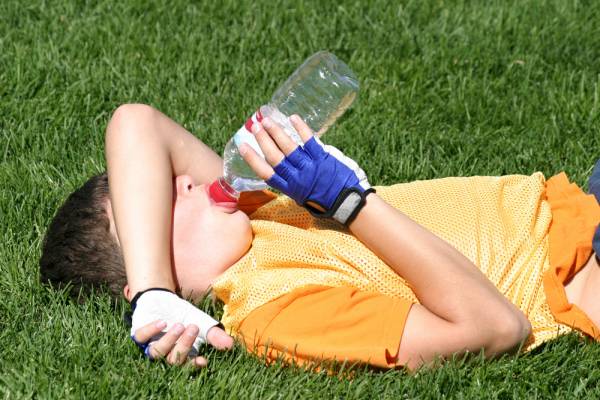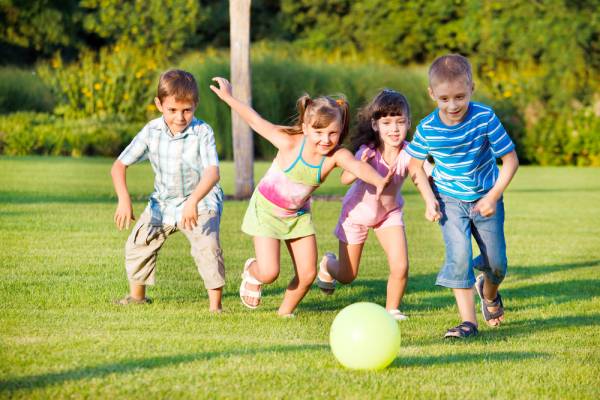Controversy abounds when mentioning childhood and adolescent growing pains. Even medical experts seem divided when discussing them. The wide variety of thoughts concerning the cause of growing pains range from growing pains as a manifestation of mental instability or extreme sensitivity in youth, resulting from hypermobility, or resulting from the overuse of muscles after a hard day at play.
But even the origin of the term “growing pains” is disputed. The Cleveland Clinic for Children maintains that the phrase was coined in the 1930s to 1940s, while several other studies claim that the term has been around since the 1800s.
For every theory explaining growing pains, there is another theory refuting it. Research and studies addressing the topic have had inconclusive and widely varying results. The Palo Alto Medical Foundation offers that growing pains affect ten to twenty percent of growing children, occurring more commonly in girls. Yet, doctors at Duke Children’s Hospital show that five to thirty percent of all children have musculoskeletal pain complaints, of which, only eight percent are attributed to growing pains.
Because there is no significant evidence, to date, that indicates growing pains exist as a result of childhood growth, some doctors are reluctant to use the diagnosis “growing pains” and instead diagnose the pain as variations of the phrase “benign nocturnal limb pains of childhood.” As continuing research is conducted to discover the true cause of these growing pains, new studies have emerged that indicate growing pains may actually be hereditary.
The Cause of Growing Pains
While medical experts acknowledge that growing pains are real, there is much disagreement as to the actual cause of growing pains. The Mayo Foundation for Medical Research and Information states there is no evidence that childhood growth is painful or even that growing pains are related to growth.“The cause of growing pains is unknown. But there’s no evidence that a child’s growth is painful. And growing pains don’t usually happen where growth is occurring or during times of rapid growth.”
One theory, put forth by the Mayo Clinic, is that growing pains may be linked to restless legs syndrome. The Women’s and Children’s Health Network of Southern Australia posits that flat-footed children and active children do not have more growing pains than any other child. Most medical research, however, disagrees with this assertion. The Cleveland Clinic Foundation directly refutes this claim stating:
“Many children with these pains are very flexible (hypermobile) with flat feet. Some children with these pains have a low pain threshold and may also have headaches and abdominal pain. One study found that children with these pains have less bone strength than the normal population. Therefore, pain on a day of increased physical activity may mean the child may have pain from “overuse” of the legs.”

From the chiropractic perspective, even more theories about growing pains are circulating. Dr. Ressel of the Van Hemert Chiropractic Family Wellness Center works with adolescent chiropractic issues and believes:
“…these ‘growing pains’ are often called ‘sciatica’ in adults. In other words, a vertebral subluxation in the low back pinching the sciatic nerve which controls the legs. These pains can also often be caused by a ‘functional pelvic imbalance.’ In simple terms, it’s a subluxation of the pelvic bones which then changes the way a child walks.”
Again, it is not easy to discern the actual cause of growing pains, when so many medical experts are in disagreement about the actual cause of these childhood pains.
Diagnosing Growing Pains
Despite the wide variations of theories as to the cause of growing pains, medical experts do agree on several criteria for diagnosing growing pains:
- Growing pains occur in the muscle, rather than the bone, and are most likely to be felt in the calf, behind the knee, or the front of the thigh.
- Pain may be felt in the arms, but this is less common than leg pain.
- Pain usually begins in the late afternoon or at night and is gone by the morning.
- Pain is often intense enough to awaken a child from sleep.
- Growing pains are most likely to occur when children have been extremely active during the day with high impact activities such as jumping, climbing, and running.
- Growing pains should not interfere with every day normal activities or sports activities.
- Pain does not occur during growth or at the site of growth.
- Growing pains do not affect a child’s growth.
- Pain does not follow a set pattern. The growing pains may be sporadic over the course of a few years or occur every night for a few days or weeks.
While not all experts agree on how to alleviate the symptoms of growing pains, they do agree on the following:
- Take your child to a doctor to rule out other possible medical conditions.
- Stretch painful muscles to help alleviate symptoms.
- Gently massage affected muscles to help alleviate symptoms.
- Apply a heating pad to the affected muscles to help alleviate symptoms.
- Give your child over the counter pain medication to help alleviate symptoms

Although medical experts clearly agree that “benign nocturnal limb pains of childhood” are not a direct result of childhood bone growth, the term “growing pains” remains a common household word most associated with childhood growth and, unfortunately, childhood pain. Whatever the cause, growing pains are certainly a very real pain that many children suffer from during childhood.
Fortunately, individual episodes of growing pains are of short duration, usually lasting no longer than thirty minutes. Because growing pains occur in the evening or at night, but do not last into the day, there are no physical or sports restrictions for children who experience them.
References:
1. American Academy of Pediatricians. Healthy Children: Health Issues: “Growing Pains are Normal Most of the Time.” healthychildren.org. Accessed 04/04/2014.
2. Baker, F. “Growing Pains.” kidspot.com.au. Accessed 04/04/2014.
3. The Cleveland Clinic Foundation. “Growing Pains.” my.clevelandclinic.org. Accessed 04/04/2014.
4. Junnila JL., Cartwright VW., “Chronic Musculoskeletal Pain in Children: Part I. Initial Evaluation.” American Family Physician. 2006 Jul 1;74(1):115-122.
5. Mayo Clinic Staff for Mayo Foundation for Medical Education and Research. “Growing Pains.” mayoclinic.org. Accessed 04/04/2014.
6. Nemours Foundation. KidsHealth. Parents: General Health: Aches, Pains & Injuries: “Growing Pains.” kidshealth.org. Accessed 04/04/2014.
7. Harris, S., “Parents and Teachers: Growing Pains.” Palo Alto Medical Foundation, Sutter Health. Accessed 04/04/2014.
8. Schanberrg, L., Clements, L., “Growing Pains.” dukemedicine.org. Accessed 04/04/2014.
9. Women’s and Children’s Health Network, “Growing Pains.” cyh.com. Accessed 04/04/2014.
10. Footnotes: Mayo Clinic Staff for Mayo Foundation for Medical Education and Research. “Growing Pains.” mayoclinic.org. Accessed 04/04/2014.
11. Ressel, O., “Chiropractic Care for Healthy Children,” vanhemertchiro.com. Accessed 04/04/2014.
Photos courtesy of Shutterstock.






